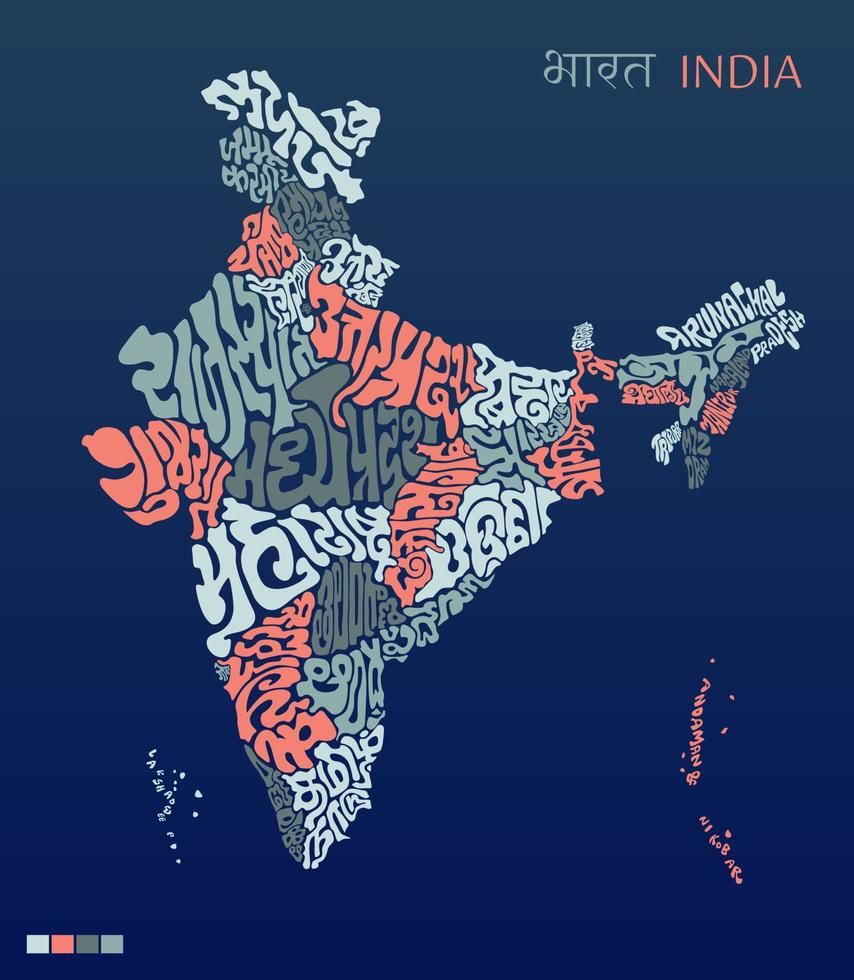Languages of India
India is known for its linguistic diversity, with hundreds of languages spoken across its regions. Language in India is not just a medium of communication; it reflects culture, heritage, and identity.
1. Constitution and Languages
The Constitution of India recognizes the importance of languages in national life:
Official Languages:
Hindi (in Devanagari script) is the official language of the Union.
English is used as an associate official language for communication between states and in central administration.
Eighth Schedule: Lists 22 recognized languages of India that are given special status and development support.
2. The 22 Officially Recognized Languages (Eighth Schedule)
| Language | States/Regions where widely spoken | Script |
|---|---|---|
| Hindi | Most of North & Central India | Devanagari |
| Bengali | West Bengal, Tripura | Bengali |
| Telugu | Andhra Pradesh, Telangana | Telugu |
| Marathi | Maharashtra | Devanagari |
| Tamil | Tamil Nadu, Puducherry | Tamil |
| Urdu | Jammu & Kashmir, Telangana, Uttar Pradesh | Perso-Arabic |
| Gujarati | Gujarat | Gujarati |
| Kannada | Karnataka | Kannada |
| Odia | Odisha | Odia |
| Malayalam | Kerala, Lakshadweep | Malayalam |
| Punjabi | Punjab, Chandigarh | Gurmukhi |
| Assamese | Assam | Assamese |
| Maithili | Bihar | Devanagari |
| Santali | Jharkhand, West Bengal | Ol Chiki |
| Kashmiri | Jammu & Kashmir | Perso-Arabic/Devanagari |
| Nepali | Sikkim, parts of West Bengal | Devanagari |
| Konkani | Goa, Karnataka, Maharashtra | Devanagari/Latin |
| Sindhi | Gujarat, Maharashtra | Devanagari/Arabic |
| Dogri | Jammu & Kashmir | Devanagari |
| Manipuri | Manipur | Meitei Mayek |
| Bodo | Assam | Devanagari |
| Sanskrit | Pan India (classical, liturgical) | Devanagari |
Note: These 22 languages are recognized for official use and cultural development. Many other languages are spoken across India, making it a multilingual nation.
3. Language Families in India
India’s languages belong to four major language families:
Indo-Aryan Languages (Majority of North India)
Examples: Hindi, Bengali, Marathi, Punjabi, Odia
Dravidian Languages (Majority of South India)
Examples: Tamil, Telugu, Kannada, Malayalam
Tibeto-Burman Languages (Northeast India)
Examples: Bodo, Meitei (Manipuri), Naga languages
Austroasiatic Languages (Central & Eastern India)
Examples: Santali, Mundari
4. Importance of Languages in India
Cultural Identity: Languages reflect traditions, literature, and heritage.
Education and Communication: Medium of teaching, governance, and media.
Unity in Diversity: Respecting all languages promotes social harmony.
Preservation of Knowledge: Classical languages like Sanskrit carry ancient wisdom.
5. Language Policy
Three-language formula: Encourages students to learn:
Regional language
Hindi
English
Promotion of Hindi: Encouraged as a link language but regional languages are respected.
Development of Minority Languages: Government supports literature, education, and media in all recognized languages.
Conclusion
India is truly a land of linguistic diversity. With 22 officially recognized languages and hundreds of regional languages and dialects, the country thrives on unity in diversity. Languages in India are not just tools of communication but carriers of culture, heritage, and identity. Respecting and preserving them is key to maintaining India’s cultural richness and social harmony.








